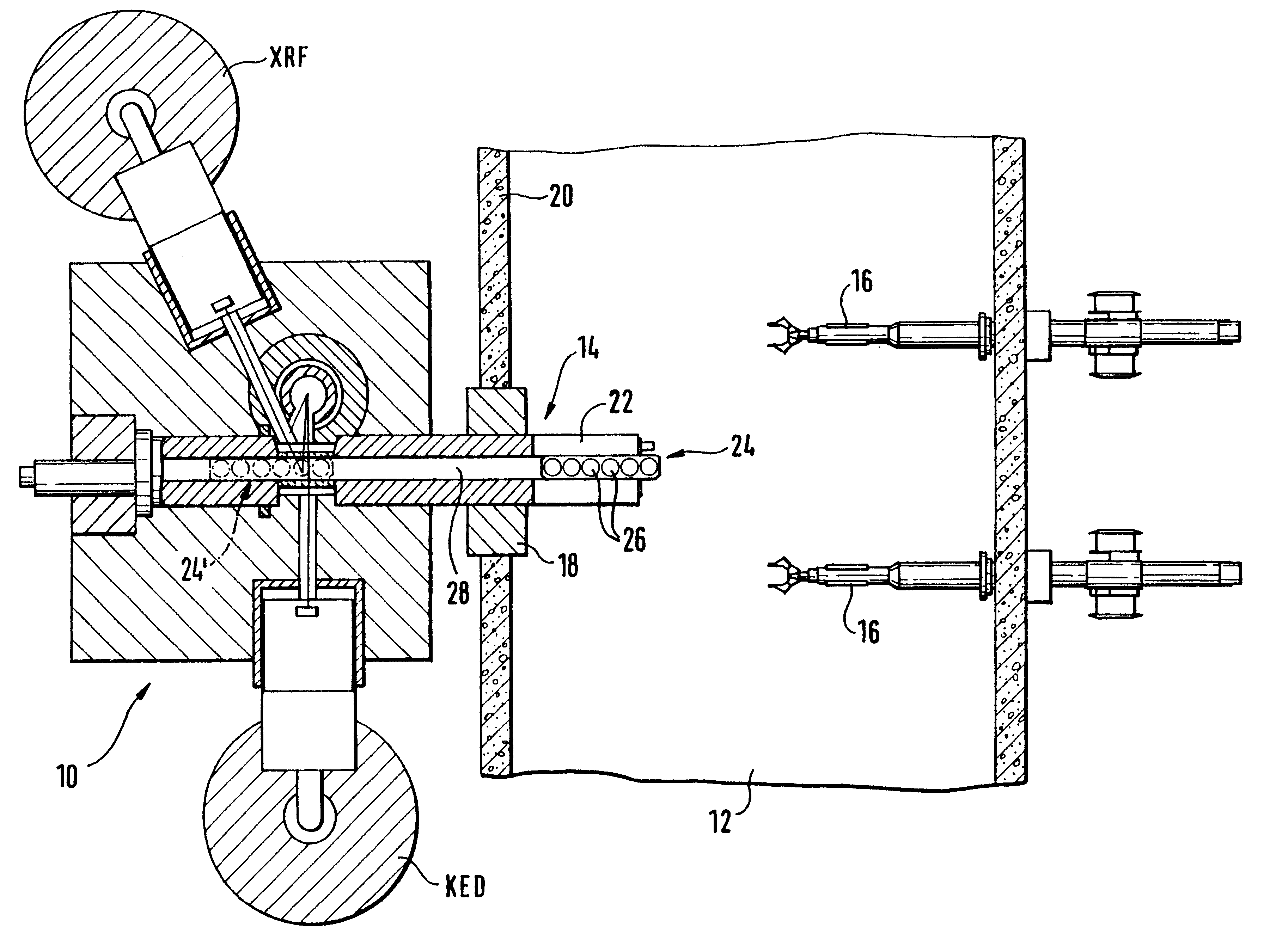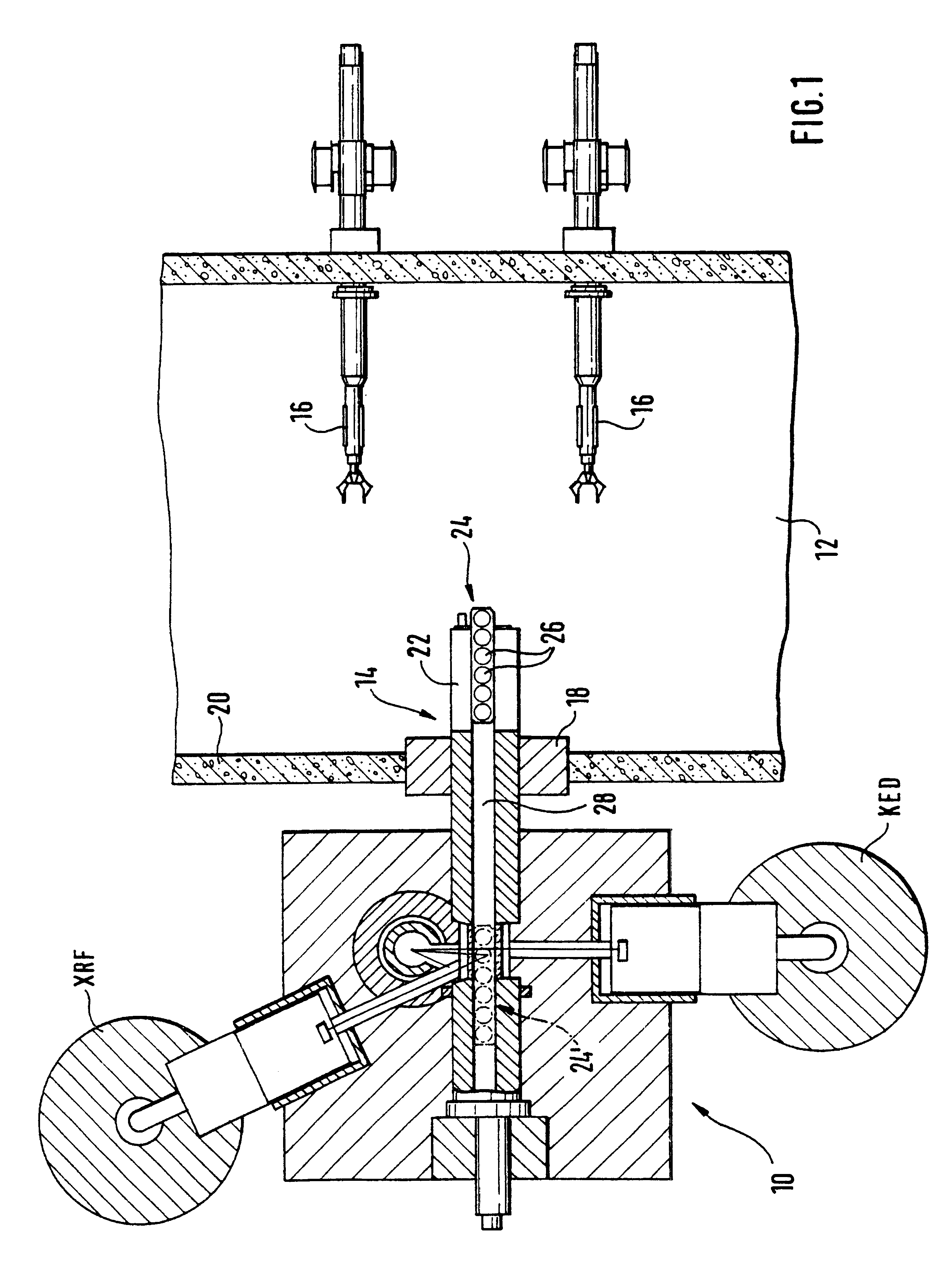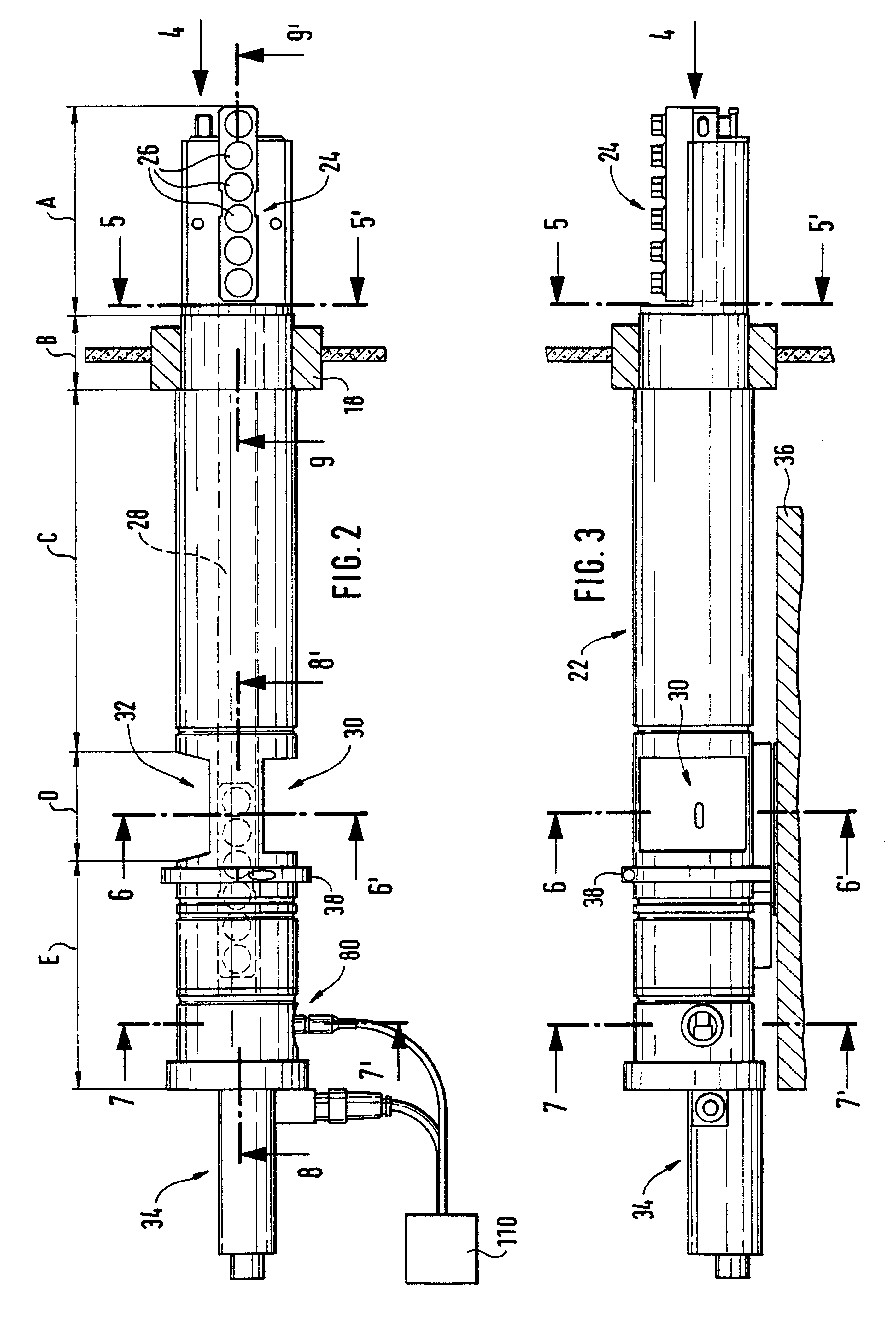Sample changer for transferring radioactive samples between a hot cell and a measuring apparatus
a technology of hot cell and sample changer, which is applied in the direction of instruments, nuclear elements, nuclear engineering, etc., can solve the problem of manual intervention for changing samples, and achieve the effect of high operational reliability, excellent positioning accuracy of samples, and no need to increase the cross-section of containmen
- Summary
- Abstract
- Description
- Claims
- Application Information
AI Technical Summary
Benefits of technology
Problems solved by technology
Method used
Image
Examples
Embodiment Construction
FIG. 1 schematically shows a measuring facility comprising a shielded measuring apparatus 10, which is connected to a shielded hot cell 12 by means of a sample changer 14 in accordance with the present invention.
The exemplary measuring apparatus shown in FIG. 1 is a Hybrid K-Edge Densitometer (HKED), i.e. a special X-ray spectrometer designed for the analysis of uranium and plutonium concentrations in liquors, which are obtained after dissolution of various types of nuclear materials (e.g. irradiated reactor fuel elements). For more details with regard to the apparatus and to the measurement techniques it is referred to the document:--"The Hybrid K-Edge / K-XRF Densitometer: Principles--Design--Performance", Report KfK 4590, Kernforschungszentrum Karlsruhe (1991).
The hot cell 12 is a well shielded enclosure, in which highly radioactive materials can be manipulated safely by means of telemanipulators 16. The hot cell environment is characterised by the presence of highly corrosive acid...
PUM
| Property | Measurement | Unit |
|---|---|---|
| outer diameter | aaaaa | aaaaa |
| width | aaaaa | aaaaa |
| width | aaaaa | aaaaa |
Abstract
Description
Claims
Application Information
 Login to View More
Login to View More - R&D
- Intellectual Property
- Life Sciences
- Materials
- Tech Scout
- Unparalleled Data Quality
- Higher Quality Content
- 60% Fewer Hallucinations
Browse by: Latest US Patents, China's latest patents, Technical Efficacy Thesaurus, Application Domain, Technology Topic, Popular Technical Reports.
© 2025 PatSnap. All rights reserved.Legal|Privacy policy|Modern Slavery Act Transparency Statement|Sitemap|About US| Contact US: help@patsnap.com



